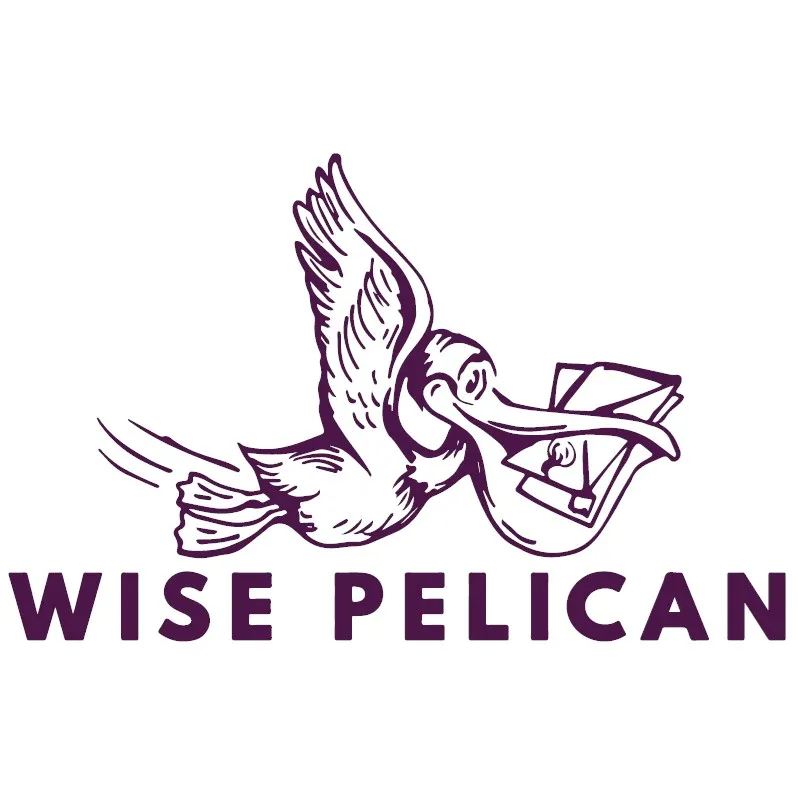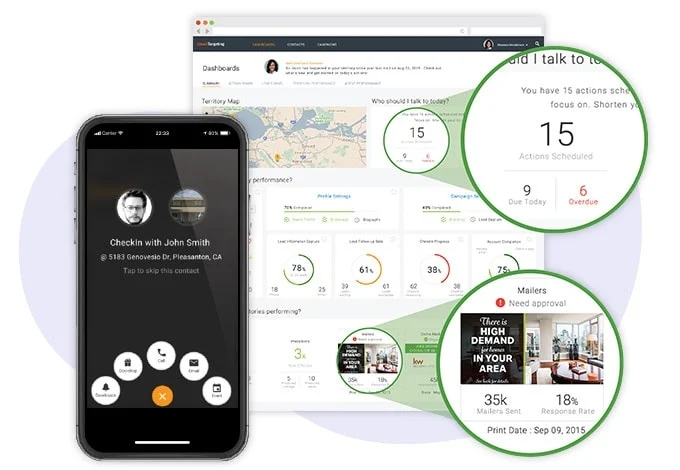Vetted by HousingWire | Our editors independently review the products we recommend. When you buy through our links, we may earn a commission.
Real estate farming, otherwise known as geo-farming, is a dependable lead generation method that can help to create a steady pipeline of real estate leads and clients in your area. Real estate farming is a slow-burn strategy where consistency and intentionality matter, but when it’s done right, your efforts can yield long-ranging results when guided by a community-first approach. If you want to add effective real estate farming tips, tools and tactics to your marketing arsenal, our guide will show you how it’s done.
Summary
What is real estate farming?
Real estate farming is a lead generation strategy where agents focus their marketing efforts on a specific geographic area. The goal is to regularly put your personal brand in front of community members to position yourself as a local expert in a specific zip code or neighborhood.
Common real estate farming ideas include direct outreach via mail, email or direct mailers, but you can also host neighborhood social events, sponsor seasonal events and provide helpful real estate information resources to your community through a social media group or webpage.
Why real estate farming is so effective?
Like all marketing, real estate farming is psychological. The well-established rule of seven explains that consumers typically work with a brand or service only after repeated exposure to it. The reason farming works so well is simple. It’s much easier, not to mention much more affordable, to get that repeated exposure in a small geographic area.
Real estate agents rarely use farming as their only marketing approach, but the ones who use it successfully credit real estate farming for the longevity of their business. Remember — most of the time, buyers and sellers may not be actively looking for your services, but when they are, real estate farming ensures you are always top-of-mind.
Clients are more likely to pick up the phone and call you after seeing your name on your real estate postcards and newsletters, for example. And after winning business in a small geographic area, your referral business begins to build upon your success.
Real estate farming: a step-by-step strategy

Every real estate agent has their own approach to real estate farming, but a few common parallels exist:
Step 1 — Choose your farm area carefully
Selecting your farm area comes down to combining your personal preferences and industry “green flags” that signal an area is worth investing resources into.
Convenience
Turnover rate
Why does turnover rate matter?
Size & accessibility
Community features & characteristics
Step 2 — Understand your farm’s demographics
Now it’s time to learn about your customer. Research who lives in the area; are they families, retirees or young professionals? Identify who might be looking to move into the area and who might be planning to leave, including families needing larger homes or empty nesters looking to downsize.

Want to laser focus your marketing on homeowners who are most likely to sell their homes in your farm area? AI farming tools like Top Producer’s Smart Targeting can help. By analyzing thousands of data points with AI, Smart Targeting can predict which homeowners are likely to sell in the next six months. Even better, it comes bundled with a CRM most agents already know and love so you won’t have to waste time learning yet another new app to market to them.
Step 3 — Study the sales data
You’ve already studied data to select your farm area, but now is the time to zero in on more specifics. You should look at:
- Average price and days on the market (DOM): Know the area’s average listing and selling prices, plus how long properties typically sit on the market.
- Current inventory: Monitor the current homes available for sale, including the types of homes, price ranges and unique property features.
- Price trends: To understand market dynamics, consider how prices have changed over time for different property types like single-family homes or condos.
- Listing vs. sales price: Help your clients understand how much negotiation room they might have in upcoming transactions. A large gap between listing and selling prices (in either direction) can inform your understanding of supply and demand.
Step 4 — Plan your outreach
Now that you know who is in your area, their needs, and what the financial data shows, you can start planning and budgeting for your marketing strategy.
Plan for a mix of in-person, digital and physical outreach methods. Most importantly, build predictability. Pick activities you know you can follow through on consistently. Try thinking of your outreach plan in terms of annual, quarterly, monthly, weekly, and ad-hoc initiatives that whet your prospects’ appetite for more interactions with you. It could look something like this:
Email Marketing, Newsletters & Text Messaging
Start with simple email marketing and SMS (text) campaigns using lead nurturing software like RealGeeks to organize and track every digital outreach attempt or “touch.” Maintaining an open line of digital communication through email and text will also be your method of reaching prospects when announcing Open Houses and other events throughout the year. An informative community newsletter is a great way to stay top-of-mind.
Establishing early digital communication with your prospects establishes their expectation that they will hear from you throughout the year (with their consent and opt-in, of course).
In-person Events
Then comes the in-real-life (IRL) fun. Give new clients a chance to meet you in person at a community movie night, a seasonal holiday parade or a local sports game. If you want to be truly memorable, come up with a signature event you and your team host every year, quarter or month.
For example, Carr describes her company’s monthly ice cream social in the same YouTube interview. On the last Friday of every summer month, her brokerage rents an ice cream truck to host a pop-up event at a community park within her farming area. The experience is memorable, she says, reminiscent of the days an ice cream truck used to drive through her neighborhood as a kid.
Gifts & Branded Marketing
If a nostalgic ice cream night isn’t your thing, send an annual gift like a holiday cookie tin, a yearly calendar, a summer beach towel or a back-to-school coffee mug tastefully featuring your brokerage’s branding. Send a seasonal cookie tin or a yearly calendar featuring company branding to community members in your farm area.
Direct Mail
Postcards, door hangers, and other marketing collateral will require a small investment, allowing you to reach more community members.

We love Wise Pelican for sending letters and postcards that’ll get noticed. Their oversized postcards are beautifully designed and printed in full-color (on both sides) on high-gloss, heavy card stock. Pricing varies by quantity, but 500 printed postcards shipped to you are just 46 cents each. The same quantity of printed, inserted, stamped and mailed letters are $1.38 each.
Social Media
Facebook groups or community websites can provide consistent value and become a go-to resource for nearby residents.

We love Coffee & Contracts for its affordable monthly subscription fee that gives you access to done-for-you, polished and consistently branded social media posts for all your social channels. You get a ton of social post ideas created for you in beautifully designed templates that you can customize with your own brand colors and fonts.
Step 5 — Calculate your budget and expected ROI
Each of the above ideas comes with an investment of time, money, or both. For instance, Carr budgets between $5,000 to $8,000 for each of her brokerage’s quarterly events, totaling $32,000 annually.
Of course, you can deploy several free real estate marketing tools, including Facebook groups and cost-effective, lead-generating websites with community-focused content.
Bottom line: Know how much you’re willing to spend across all areas — digital marketing ads, marketing collateral, in-person events, novelty items, event rentals, etc. — and determine how many homes you’d need to sell to recoup a return on that investment.
Step 6 — Start farming
With your plan, budget and knowledge in hand, it’s time to start farming. Begin by introducing yourself to the community, attending local events and gradually rolling out your planned activities. Consistency is key. Be patient and persistent; your efforts will help cultivate a strong presence within your chosen real estate farming area.
Step 7 — Track and nurture leads
As you develop momentum and add leads to your database, set up a system for regularly tracking and nurturing your relationships. Remember — contacts within your farming area are distinct from others in your CRM; they live in a geographically distinct area (likely your neighborhood!), so your messaging should be more personalized and community-focused.
When nurturing leads, tailor your communication to meet your prospects’ needs. Just think, what would your neighbor want to hear? Find natural opportunities to mention market trends in the area, community announcements, events and helpful real estate advice. Keep a detailed record of your interaction with potential clients in your farm area. Include phone calls, emails, door-knocking visits and events, and their responses to your direct mail and email campaigns.
Over time, review your interaction records periodically to evaluate which methods are most successful in engaging potential clients. Notice how often people reply to your emails, what information resonates with them, and how many attend your events. Refine your approach based on what the data shows.
Related Articles
Real estate farming tools
Whether hosting open houses, first-time homebuyer workshops or seasonal neighborhood events, these tools will help you become a go-to local expert.
Top Producer

Starting price: $399 per month for CRM + Smart Targeting

Top Producer’s leading-edge AI technology, called Smart Targeting, lets you pinpoint the homeowners with the highest potential for selling their home in your farm area. Top Producer’s CRM software is already an industry favorite but their
predictive analytics will be a game-changer for your marketing, lead generation and outreach efforts within your farm area.
Best features:
Lofty

Starting price: Inquire
Lofty is an all-inclusive AI-powered platform tailored specifically for real estate professionals. If you have a marketing need, it’s got the AI-assisted real estate marketing tool for you. Its tools for real estate agents include everything from team collaboration and productivity to lead generation and sales.
Best features:
Catalyze AI

Starting price: $360 per month
Catalyze AI is a unique real estate marketing solution for the data-driven agent. The AI-driven tool uses predictive analytics and a dataset of over 400 million data points to identify promising leads who have recently inherited property. It also pulls from event data, historical trends, behavioral analytics and other information, then provides lead suggestions for you within a 50-mile radius.
Best features:
Real estate farming: Tips and best practices

Real estate farming isn’t the kind of marketing strategy that yields overnight results. Give yourself a year of consistent effort before throwing in the towel or trying a new farming area. Budget-wise, give yourself a year of runway. Evaluate your results monthly and quarterly, looking at the big picture after a year. Only then can you truly decide whether geo-farming gave you the desired results.
When you start real estate farming, sending a “Just Sold” postcard when you sell a new house can be a powerful way to debut your services to a new community. A simple postcard announcing new sales serves the community in two ways: 1) It updates them on their neighborhood’s latest average home value, and 2) It introduces them to a new agent (you) should they decide to sell their home soon.
There’s a difference between consistency and quantity. Don’t just “spray” your farming area with impersonal, generic postcards to try and reach a massive number of prospects. Similarly, don’t sacrifice quality simply to try and mail something once a week. Be intentional. Choose methods you can execute well and commit to a cadence you can sustainably maintain.
Maybe your sweet spot is a monthly or quarterly summary of every home you’ve sold in your targeted area rather than a postcard for every sale. Or perhaps you prefer mailing seasonal cards for holidays, school breaks and special community events instead of linking your mailers to sales. Whatever your strategy, pick something you know you can commit to — and become known for it.
According to recent National Association of Realtors data, only 26% of home buyers are first-timers. So, if you’re already offering first-time homebuyer workshops in your local community, broadening such events to include activities that all community members can participate in will help you reach a broader demographic of buyers and sellers.
Don’t limit yourself to the most expensive mailers or big-budget events. You can start real estate farming by simply introducing yourself to parents at your child’s school. One pair of realtors, Alissa and Katy of the Hustle Humbly Podcast, mention that simply serving as secretary of your local Parent Teacher Association (PTA) or another community group “counts” as farming since it provides natural, conversational opportunities to bring up your work and answer prospective clients’ questions.









